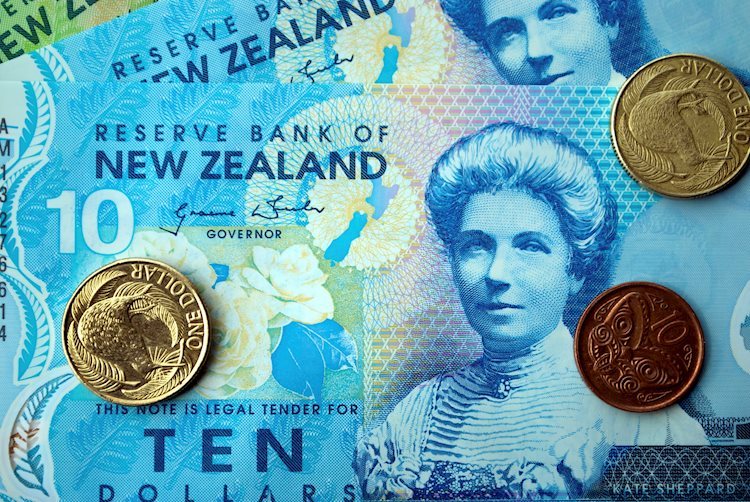The New Zealand Dollar (NZD) has been gaining momentum in the early Asian session on Tuesday, thanks to a positive risk sentiment that is weighing on the US Dollar and lifting the NZD/USD pair. This positive sentiment is driven by easing geopolitical risks in the Middle East and global market conditions. However, the recent dovish remarks from the Reserve Bank of New Zealand (RBNZ) following a surprise rate cut last week could potentially limit the pair’s upside. RBNZ Governor Adrian Orr mentioned on Monday that he is more convinced that inflation has returned to the target area of 1-3%, increasing the chances of more rate reductions in the future. Investors are closely watching the upcoming People’s Bank of China (PBoC) rate decision and Fed officials’ speeches on Tuesday, as well as New Zealand’s Retail Sales data and Fed Chair Powell’s speech at the Jackson Hole symposium on Friday.
The latest data released by Statistics New Zealand on Tuesday shows that New Zealand’s Trade Balance came in at NZD $-9.29B YoY in July, compared to $-9.5B in the previous period. Furthermore, Exports decreased to $6.15B in July while Imports rose to $7.11B, indicating a mixed trend. Meanwhile, Federal Reserve Bank of Minneapolis President Neel Kashkari suggested on Monday that cutting US interest rates in September could be appropriate due to concerns about the weakening labor market. The markets are currently pricing in a nearly 77% chance of a 25 basis points Fed rate cut in the September meeting. The Chicago Fed President also highlighted that the US economy does not show signs of overheating, emphasizing the need for caution in terms of monetary policy decisions.
From a technical analysis standpoint, the New Zealand Dollar is showing signs of resuming its broader bullish trend. The NZD/USD pair continues to edge higher, breaking above a descending trendline on the daily chart and holding above the key 100-day Exponential Moving Average (EMA). Additionally, the bullish 14-day Relative Strength Index (RSI) supports buyers, with a potential break above the upper boundary of the Bollinger Band at the 0.6100 psychological level opening the way to higher levels. On the downside, a crucial support level is seen at 0.6050, with further support at 0.5974 and 0.5846. Overall, the technical outlook for the NZD/USD pair suggests a positive bias, with potential upside targets in focus.
The New Zealand Dollar, also known as the Kiwi, is influenced by various factors such as the health of the New Zealand economy, central bank policy, and external factors like the Chinese economy and dairy prices. China being New Zealand’s biggest trading partner, any negative news for the Chinese economy can impact NZD due to reduced exports. Moreover, the Reserve Bank of New Zealand (RBNZ) plays a crucial role in managing inflation and interest rates, which in turn affects the currency. Macroeconomic data releases in New Zealand are important for assessing the state of the economy and can influence NZD’s valuation. Additionally, the Kiwi tends to strengthen during risk-on periods and weaken during market turbulence, reflecting investors’ sentiment towards higher-risk assets and safe havens.
In conclusion, the New Zealand Dollar’s recent gains can be attributed to a positive risk sentiment and weakening US Dollar. However, factors like the RBNZ’s dovish stance and upcoming economic events could impact the currency’s trajectory in the near term. With a mix of technical and fundamental factors at play, investors will continue to monitor key developments to gauge the future direction of the NZD/USD pair. As market conditions evolve, staying updated on economic indicators, central bank policy decisions, and global market trends will be essential for making informed trading decisions involving the New Zealand Dollar.











